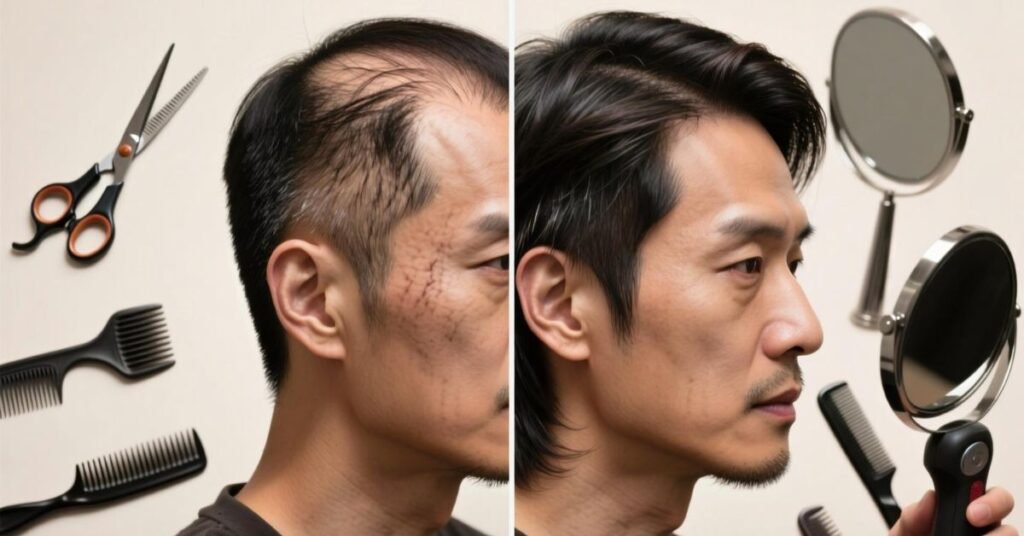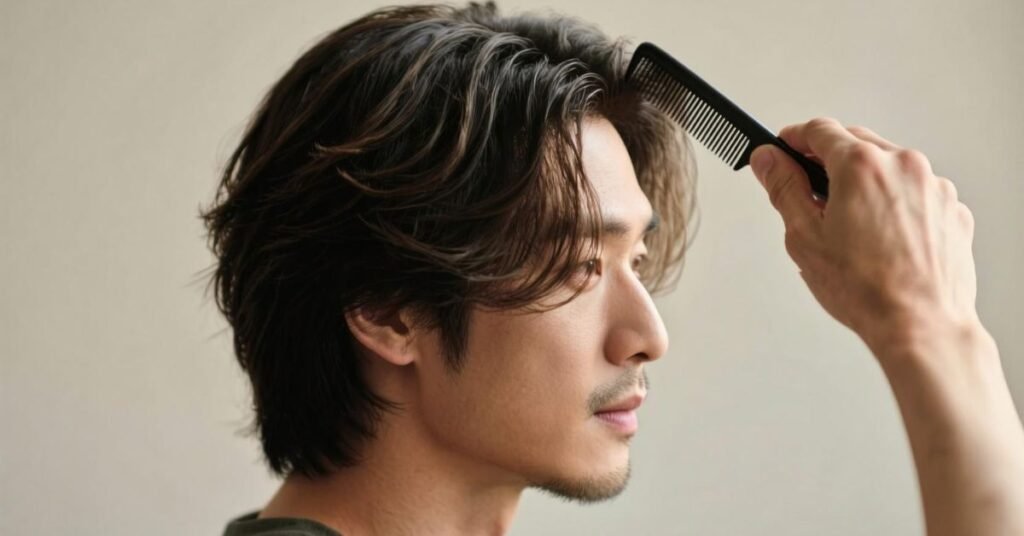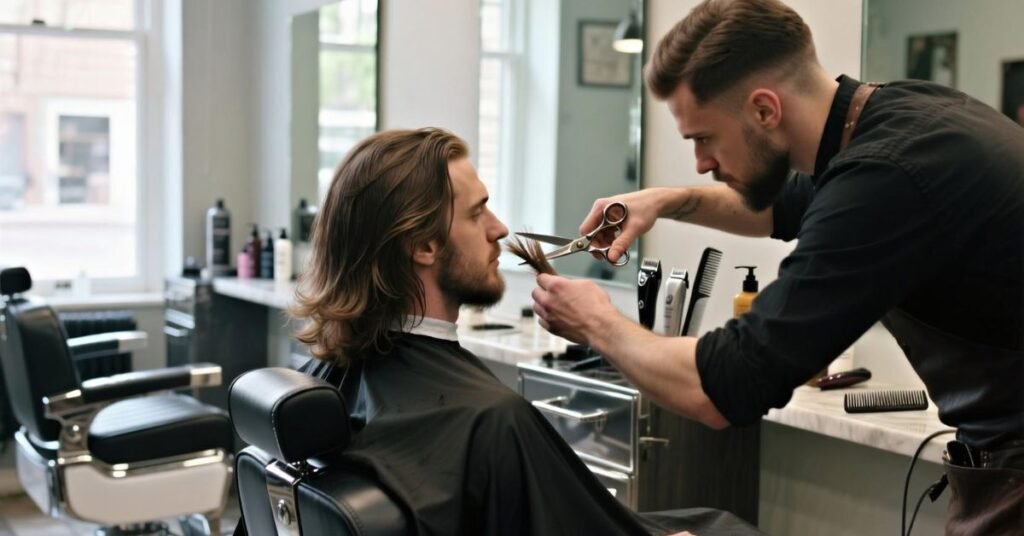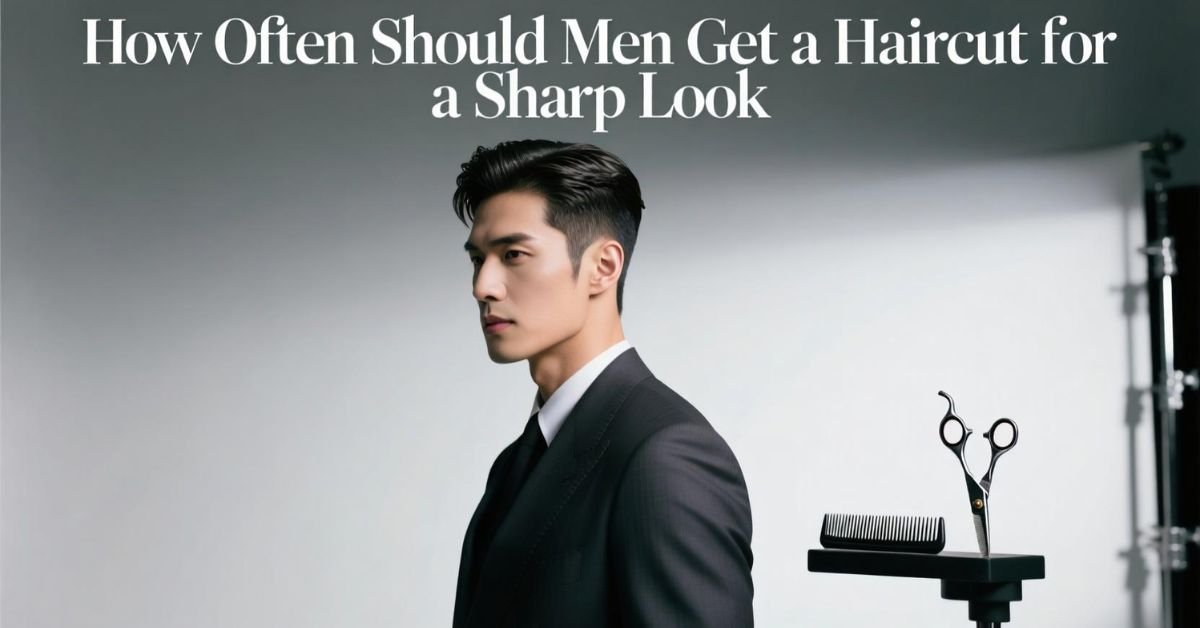Introduction
Hair is among the first features people notice. For men, a good haircut is not just about style. It also shows personal care and confidence. But the question many men ask is, how often should men get a haircut?The answer varies based on your hair type, style, and personal preferences. Some hairstyles require regular trims to stay neat. Others can go longer between cuts. Understanding the right schedule helps keep your hair looking fresh without overdoing it.
A regular haircut is also important for hair health. Split ends and uneven growth can make even a great style look messy.Regular visits to your barber help keep your style sharp and easy to manage. Let’s explore how often men should actually get a haircut depending on style, hair type, and lifestyle.
Why Regular Haircuts Matter for Men
A haircut is more than removing extra hair. It is about keeping the shape, texture, and overall health of your hair. For men who prefer a clean and professional look, regular trims are essential.Hair grows at an average rate of about half an inch each month. This means your style can lose its shape within weeks if you wait too long.

Regular haircuts also reduce issues like split ends and uneven layers. Shorter styles like fades or buzz cuts lose sharpness quickly, so they need more upkeep. Longer styles may allow more time between trims, but they still need attention to avoid looking messy. In addition, trimming helps your hair grow healthier by removing damaged ends.
A well-kept hairstyle can also boost your confidence. People often associate neat hair with being well-groomed and professional. So, whether for work, social events, or personal satisfaction, regular haircuts play an important role in how others see you.
Hair Growth and How It Affects Haircut Frequency
To know how often you should get a haircut, it’s important to understand how hair grows. On average, men’s hair grows about half an inch every month. However, factors like age, genetics, diet, and health can change this rate. Faster hair growth means you’ll need more frequent trims to keep your style neat.

Short hairstyles show changes faster. If you have a fade, the sharp lines start to fade away after a week or two. On the other hand, longer hairstyles can hide growth better. But even then, too much time between cuts can lead to split ends and a loss of shape.
Men who are growing out their hair still benefit from regular trims. Removing damaged ends during growth prevents breakage. It also keeps your hair looking neat while you wait for the length you want.
Recommended Haircut Schedule for Different Styles
Different hairstyles need different care. A buzz cut, for example, needs a trim far more often than shoulder-length hair. Here is a table showing how often men should get a haircut depending on their style.
| Hairstyle | Ideal Haircut Frequency | Reason |
| Buzz Cut | Every 1–2 weeks | Keeps length even and sharp |
| Skin Fade / Low Fade / High Fade | Every 2–3 weeks | Fades lose sharpness quickly |
| Crew Cut | Every 3–4 weeks | Maintains clean and neat look |
| Medium Length | Every 4–6 weeks | Keeps shape without over-trimming |
| Long Hair | Every 6–8 weeks | Prevents split ends and maintains style |
Short Hairstyles: When to Get a Haircut
Short hairstyles like buzz cuts, fades, and crew cuts need regular attention. This is because even a small amount of growth can make them look untidy. A fade haircut, for example, starts losing its clean contrast within two weeks. If you like your hair very short and sharp, you should see your barber every one to three weeks depending on your style.

Buzz cuts require the most maintenance since any growth changes the overall look quickly. Men who want a consistent buzz cut often schedule weekly or bi-weekly trims. This ensures the hair remains the same length all around and the style stays neat.
Short styles are popular for their clean look and low styling needs. But to keep that fresh-from-the-barber look, regular visits are a must. Skipping trims can make your style lose its edge.
Medium Hairstyles: Keeping the Shape
Medium-length hairstyles allow more time between cuts. Styles like side parts, quiffs, and textured crops still look good even after a few weeks of growth. However, going too long without a trim can make them harder to style.

For most medium-length styles, visiting the barber every four to six weeks is ideal. This helps maintain the shape without cutting too much length. Regular trims also prevent split ends, which can make the style look rough.
Medium hairstyles give flexibility in styling, but they still require upkeep. A light trim keeps the look fresh while allowing room for small style changes over time.
Long Hairstyles: Trimming Without Losing Length
Men with long hair often think they can skip haircuts. While it’s true that longer hair hides growth better, it still needs regular trimming. Without trims, split ends can move up the hair shaft, causing damage and making hair look frizzy.

For long hair, getting a haircut every six to eight weeks is recommended. The goal here is not to shorten the length but to maintain healthy ends. Regular trims also make styling easier and prevent tangling.
If you are growing your hair longer, trimming might feel like a setback. But removing damaged ends actually helps hair grow stronger. This ensures your hair looks healthy when it reaches your desired length.
Signs You Need a Haircut Sooner
Even with a set schedule, sometimes your hair needs attention earlier. If your hairstyle is losing shape, becoming hard to manage, or showing signs of damage, it’s time to book an appointment.

A few key signs include uneven growth, split ends, and a style that takes too long to fix in the morning. For fades and short cuts, faded lines or overgrown sides are clear signs. For longer hair, frizz and tangled ends mean it’s time for a trim.
Listening to your hair’s needs is just as important as following a schedule. Your lifestyle, work needs, and personal style will also affect how often you visit the barber.
How Lifestyle Affects Haircut Frequency
Your daily activities can impact how quickly your hairstyle loses its shape. Men who work in professional environments may want sharper, more frequent trims. Those who play sports or wear helmets often might see their hair flatten or lose style faster.

If you attend events often or value a polished look, more frequent haircuts will help maintain your image. On the other hand, men with a casual lifestyle may be able to extend the time between cuts without it affecting their appearance.
Humidity, sun exposure, and hair products can also influence how quickly your hair shows signs of wear.Tailoring your haircut schedule to these factors helps keep your hair healthy and looking great.
Tips to Maintain Your Hair Between Cuts
While haircuts are the main way to keep your hair neat, good daily care helps extend the time between trims. Using a quality shampoo and conditioner keeps your hair clean and soft. A small amount of styling products can help control growth until your next visit.

Brushing regularly helps distribute natural oils and prevent tangles. If you have a fade or short style, a quick trim of the sideburns or neckline at home can make it look fresh until your next barber appointment.
By taking small steps to care for your hair daily, you can keep it looking good even as it grows. This is especially useful if you can’t always visit the barber on time.
Conclusion
The answer to how often men should get a haircut depends on style, lifestyle, and hair type. Short styles need more frequent trims, while longer hair can go a bit longer between cuts. But regular haircuts are important for both style and health.
Taking care of your hair is a simple but powerful part of self-care. Whether you prefer sharp fades or flowing locks, the right schedule keeps your style fresh and your hair healthy. Make regular trims a habit and enjoy a look that always works for you.
FAQs
1. How often should men get a haircut for short hair?
Men with short hair should get a haircut every 2–4 weeks depending on the style.
2. Can I skip trims if I am growing my hair?
You should continue getting trims every 6–8 weeks to prevent split ends and maintain healthy hair.
3. Does hair type affect how often I need a haircut?
Yes. Thick or curly hair may need more shaping, while fine hair may require trims to keep volume.
4. What happens if I wait too long between haircuts?
Your style can lose shape, split ends may appear, and hair can become harder to manage.
5. How do I make my haircut last longer?
Good daily care, using quality products, and light touch-ups at home can help extend your style.

Mughal Hamza is an experienced SEO expert specializing in keyword research, on-page optimization, and content strategy. Passionate about driving organic traffic and improving search rankings for businesses.


